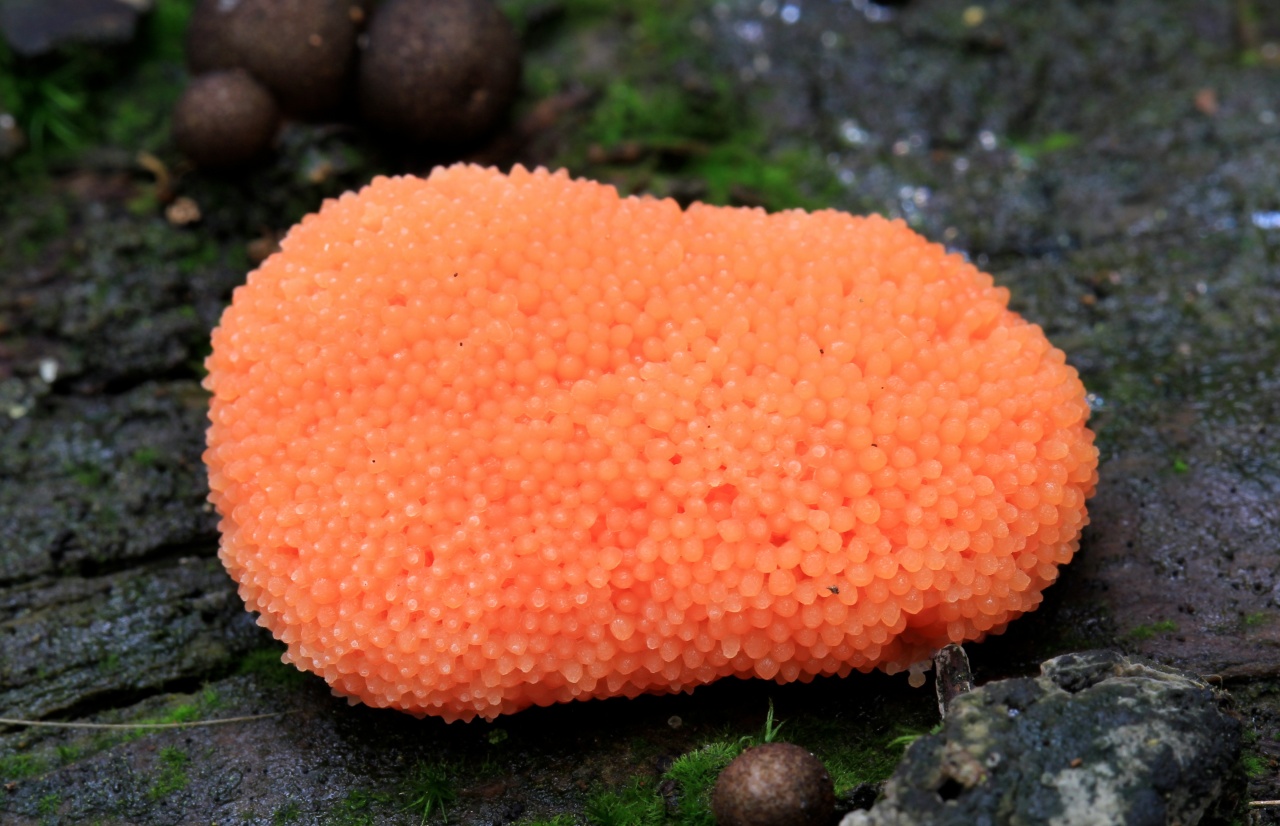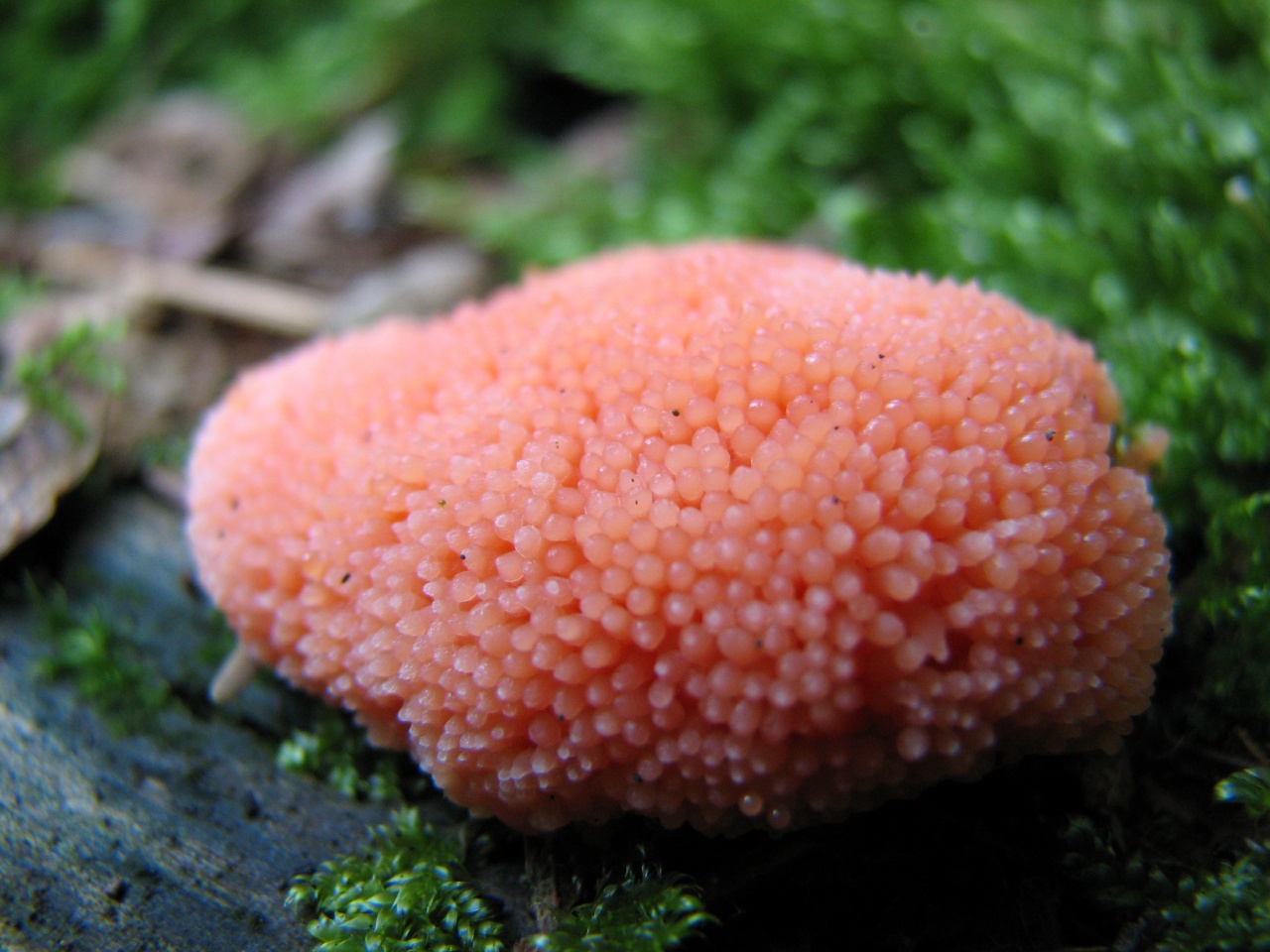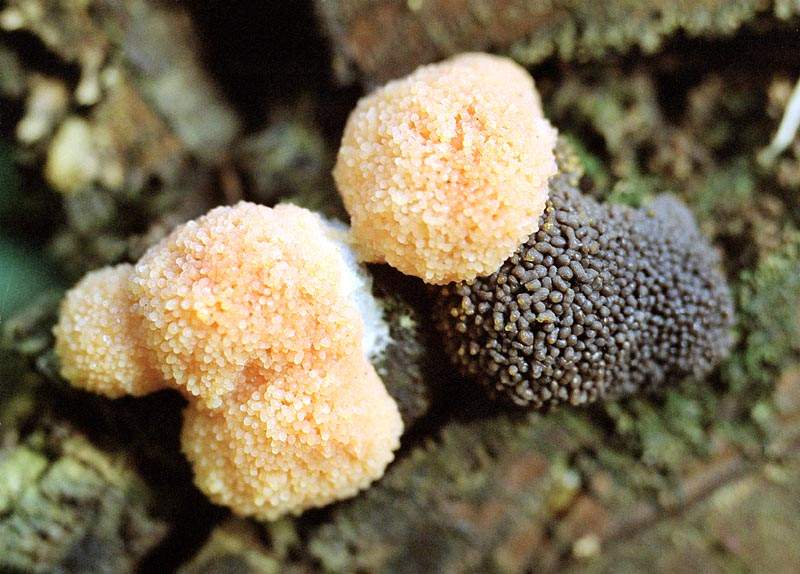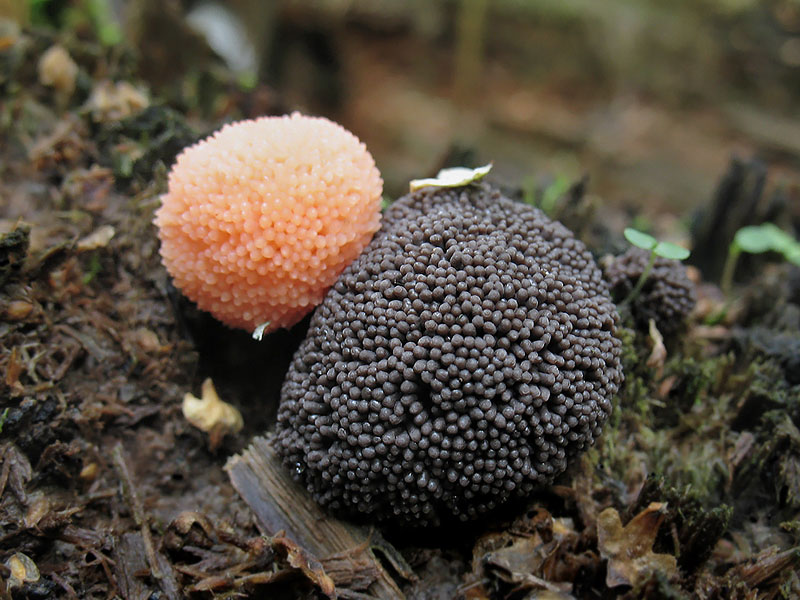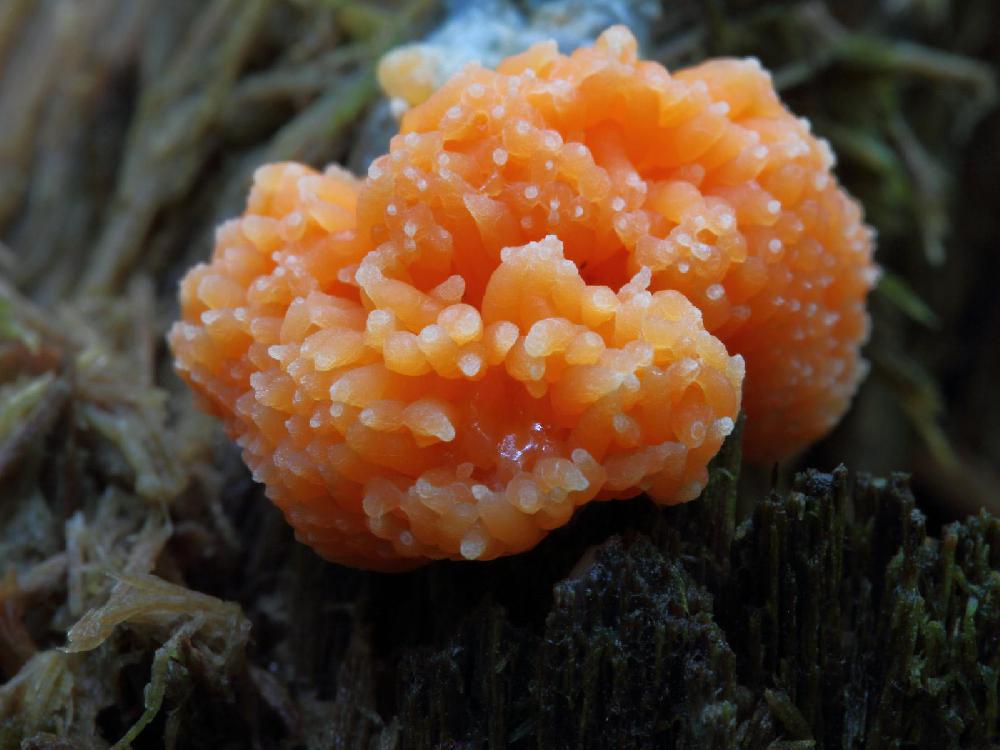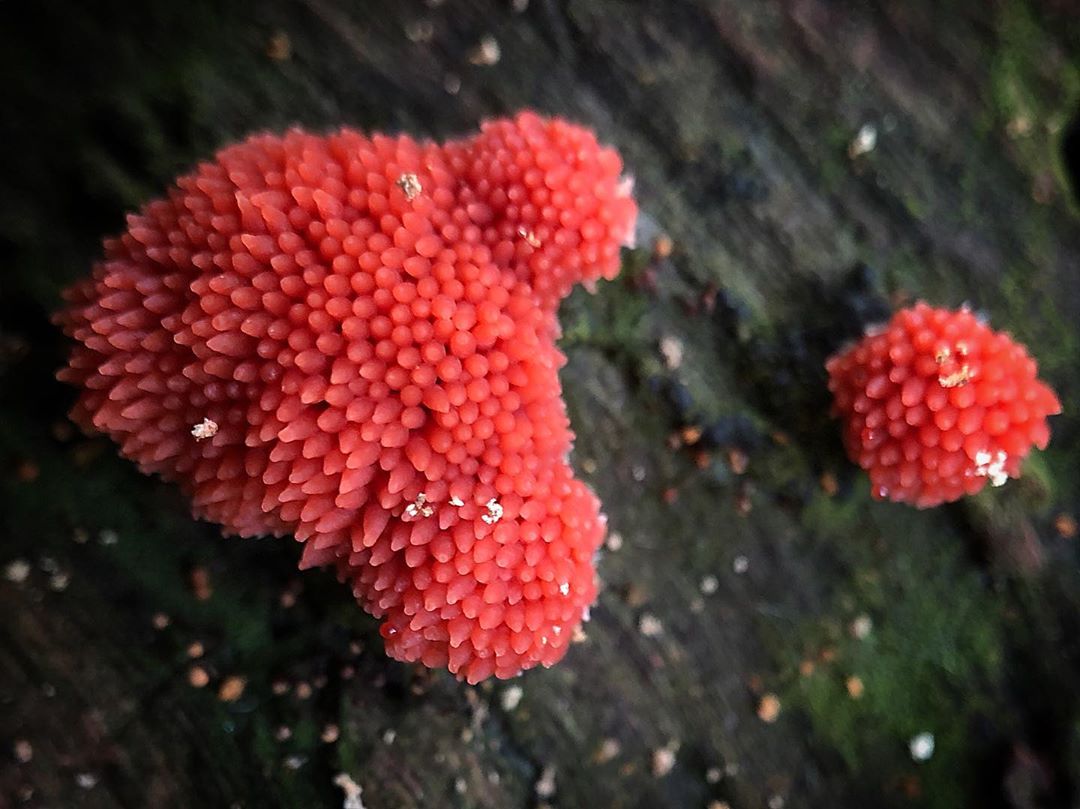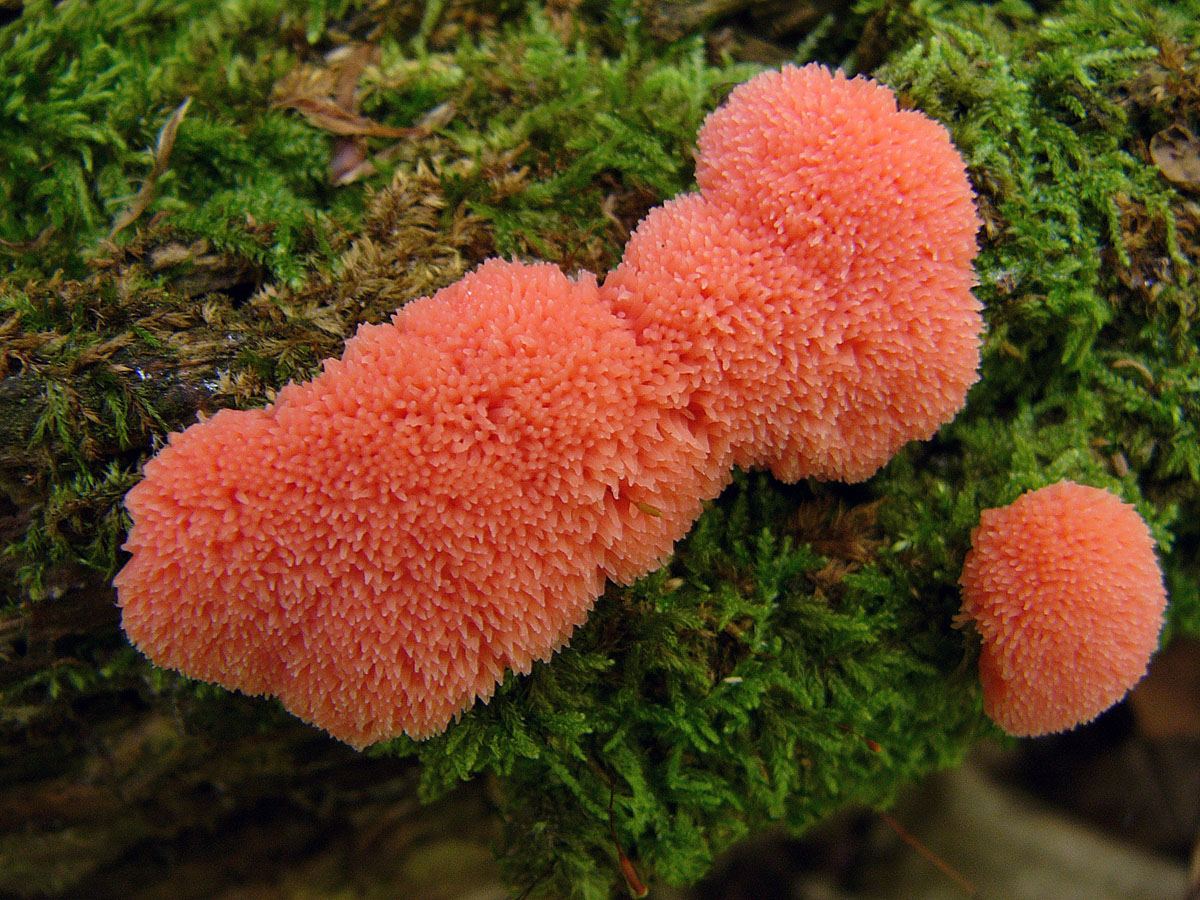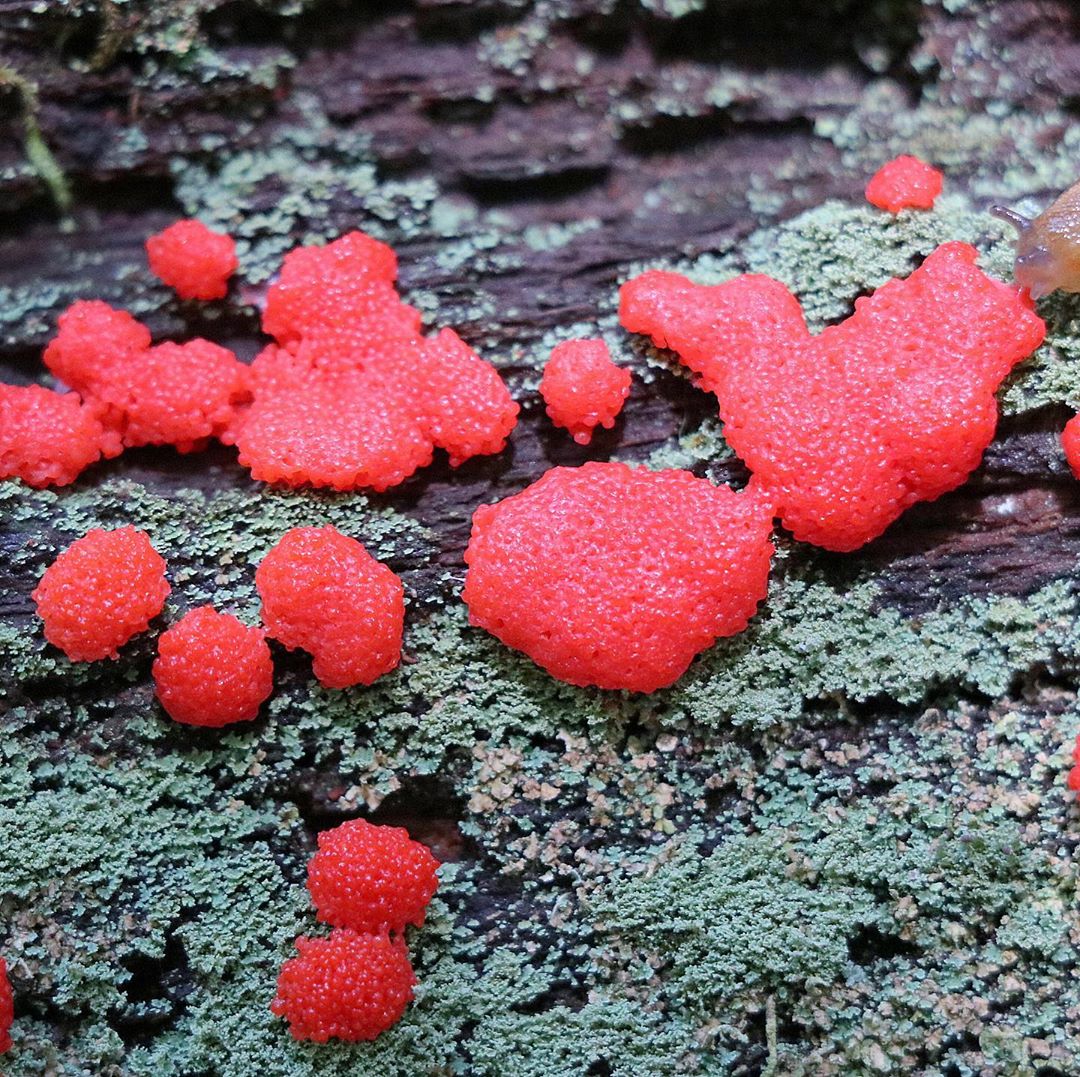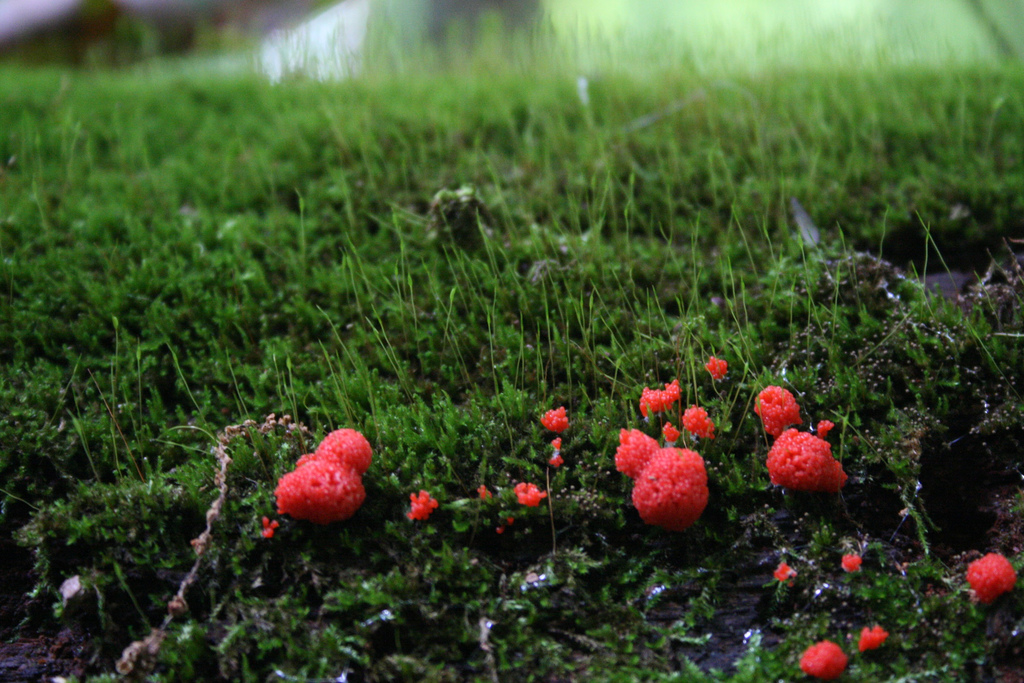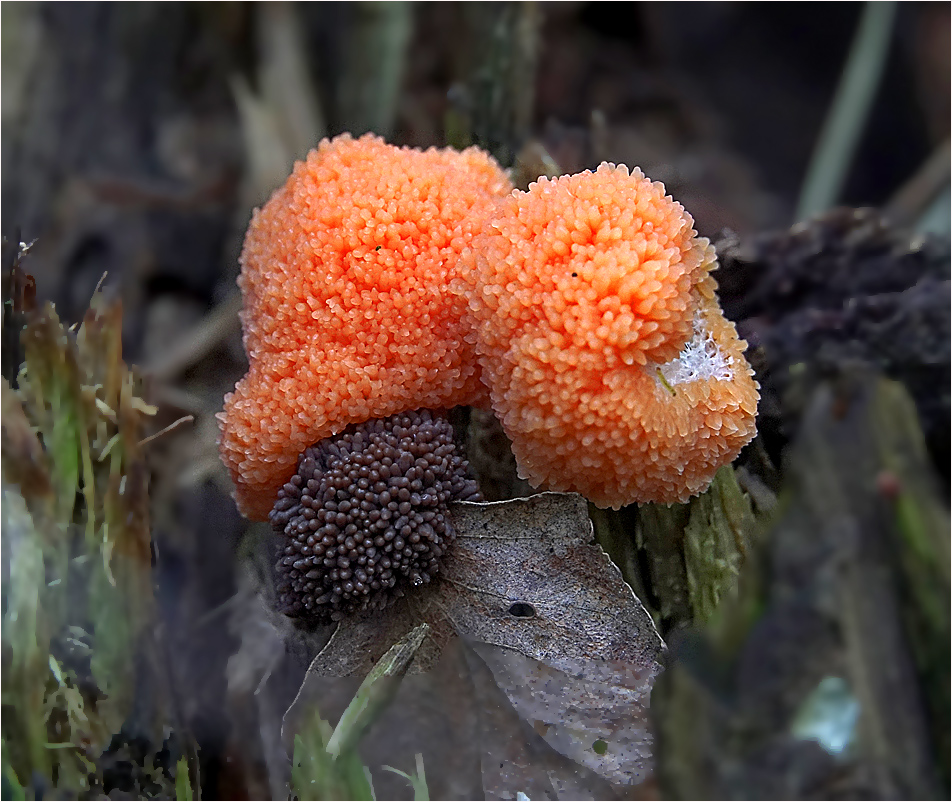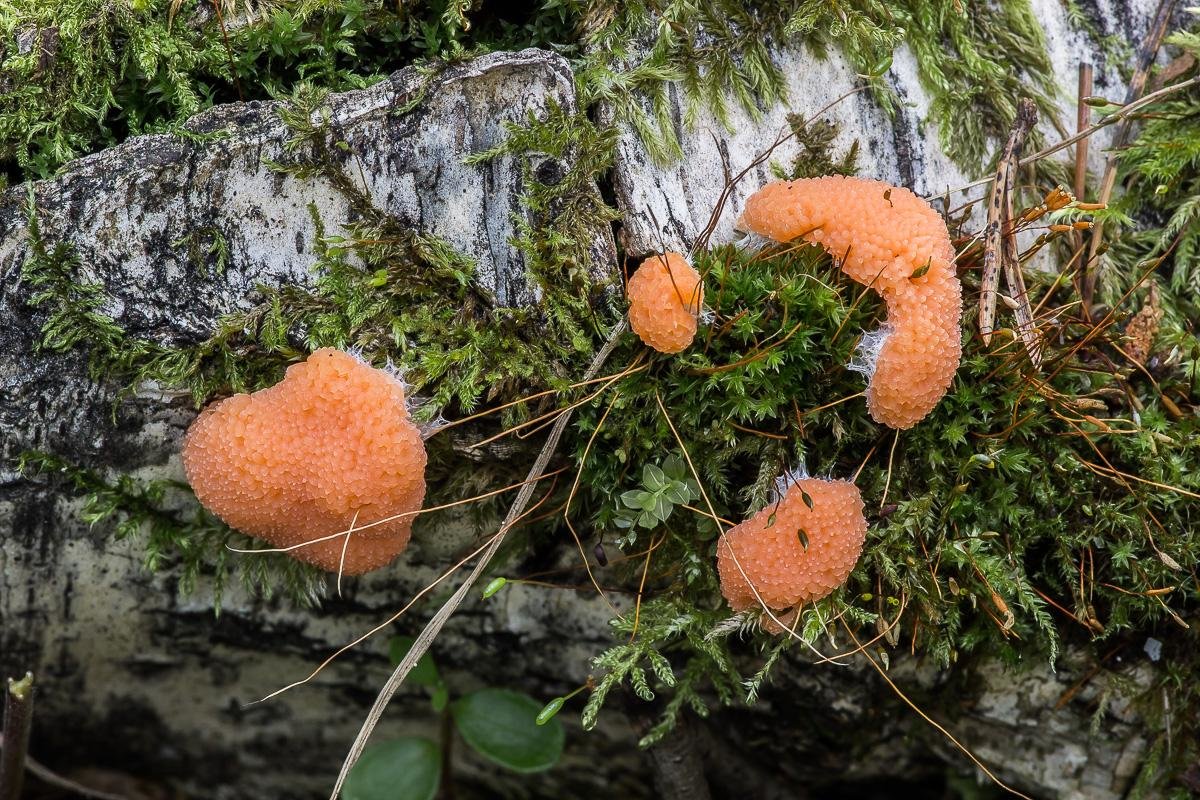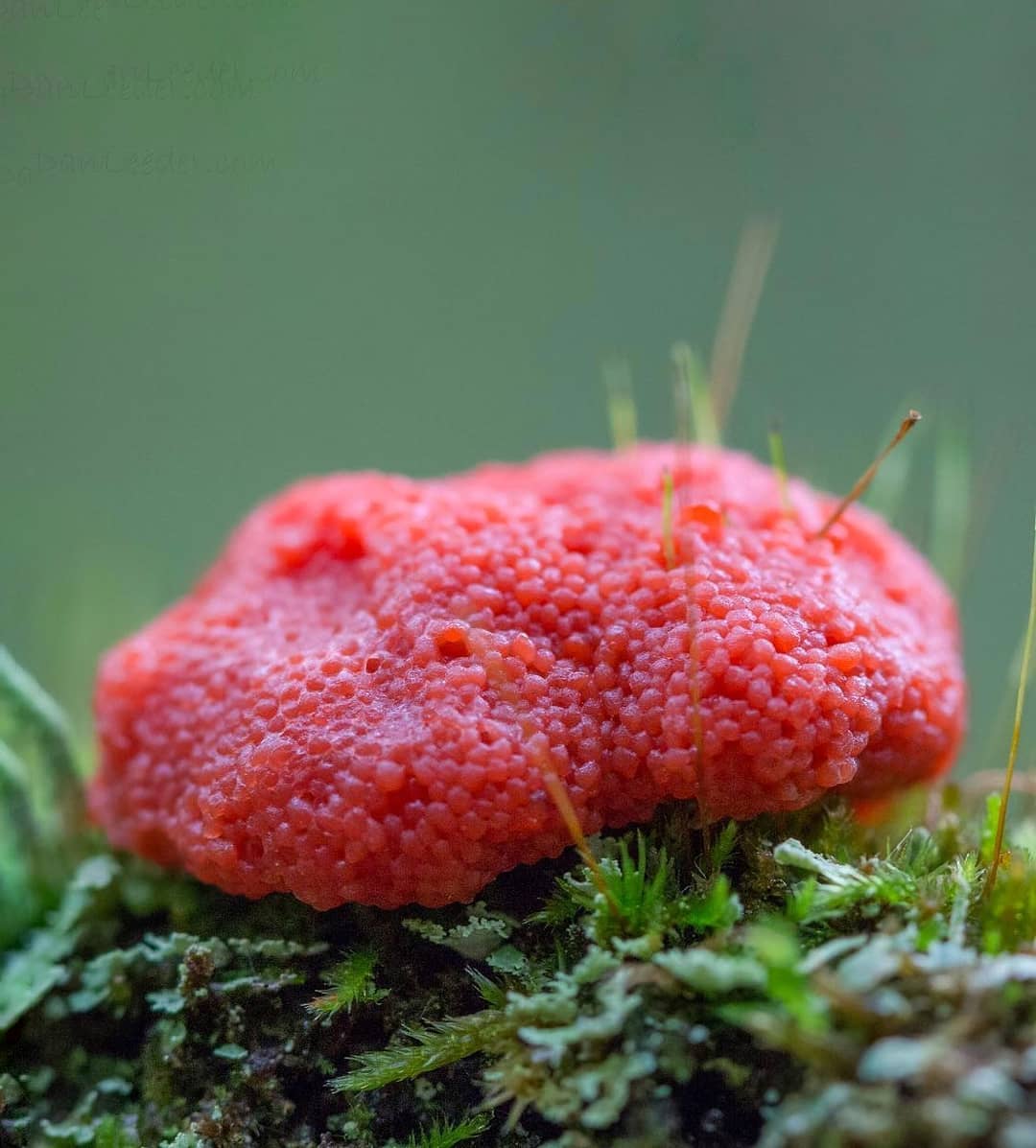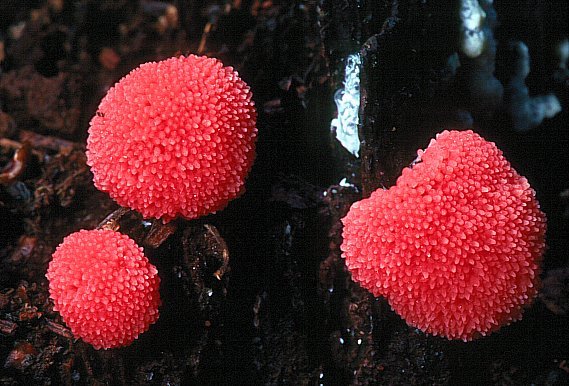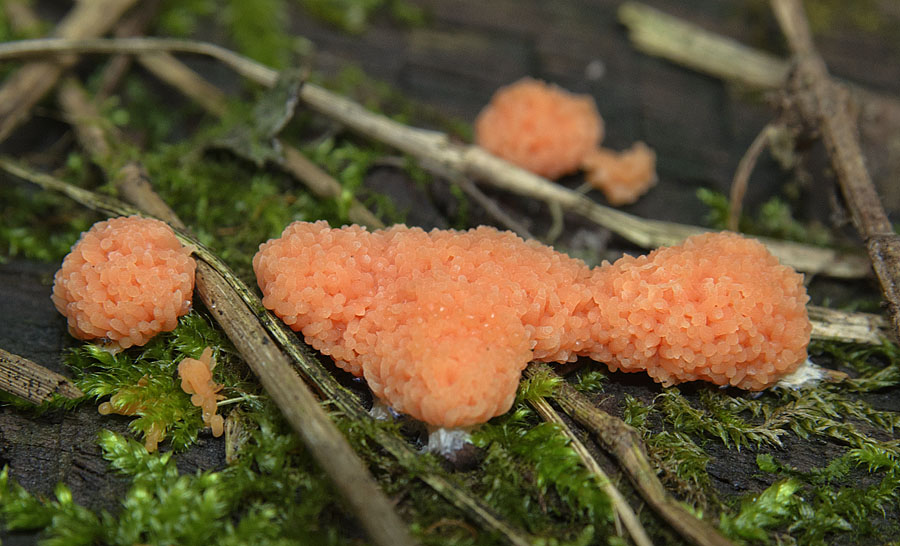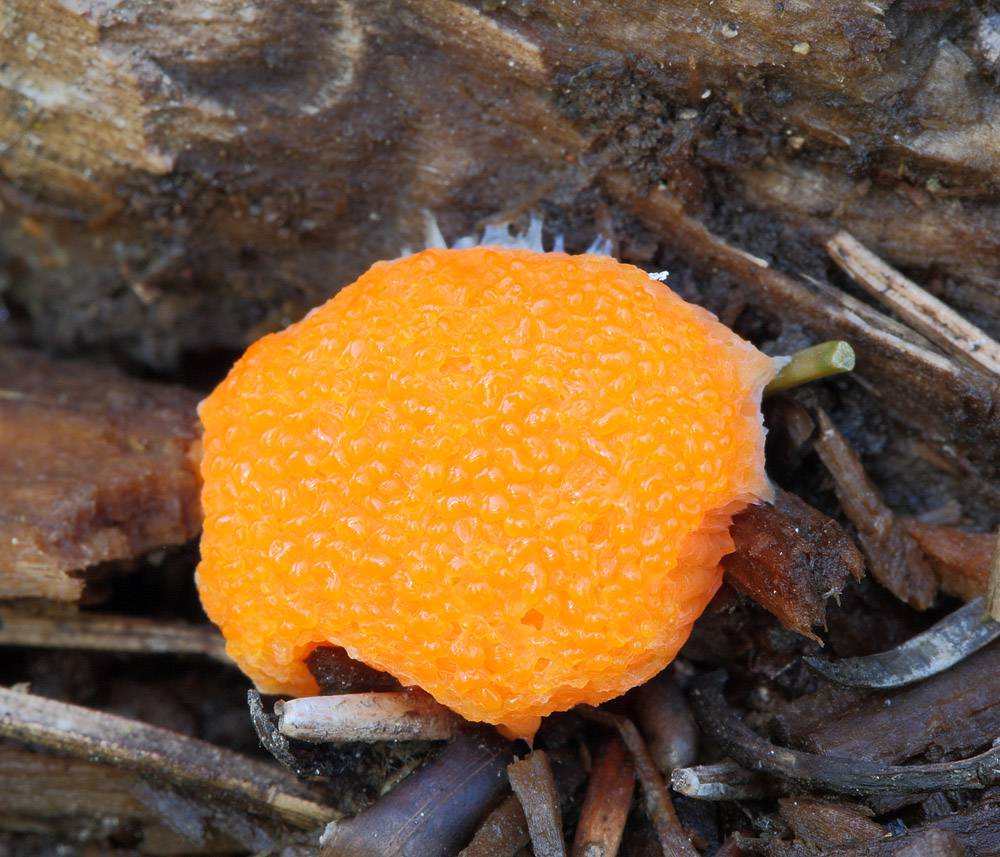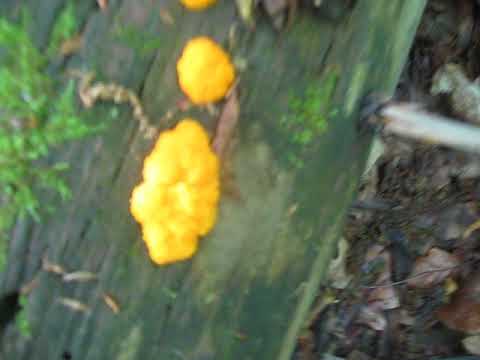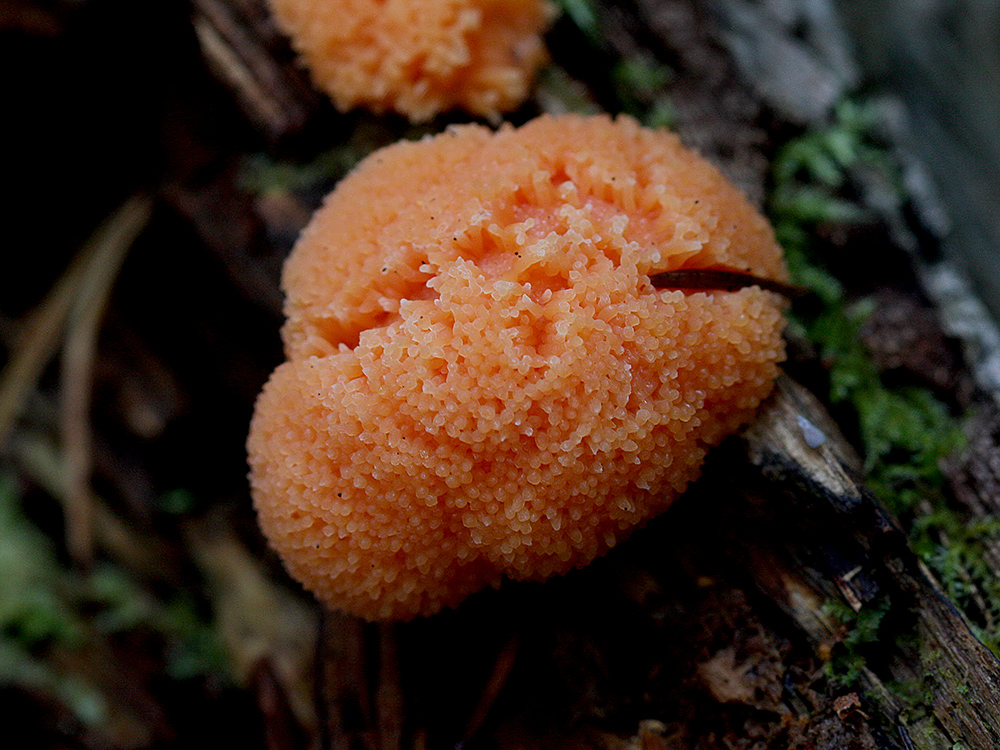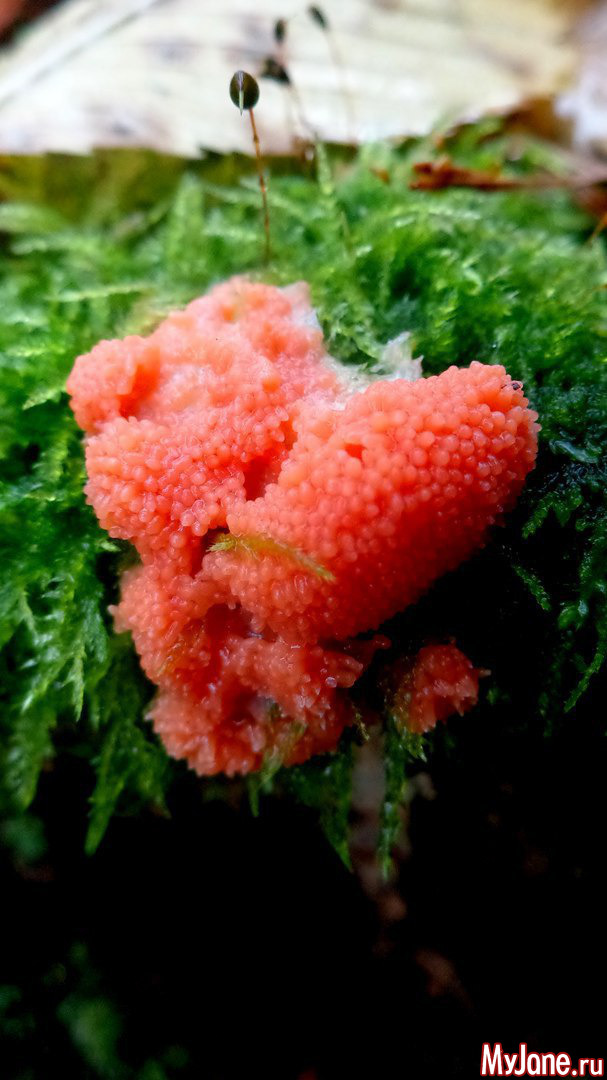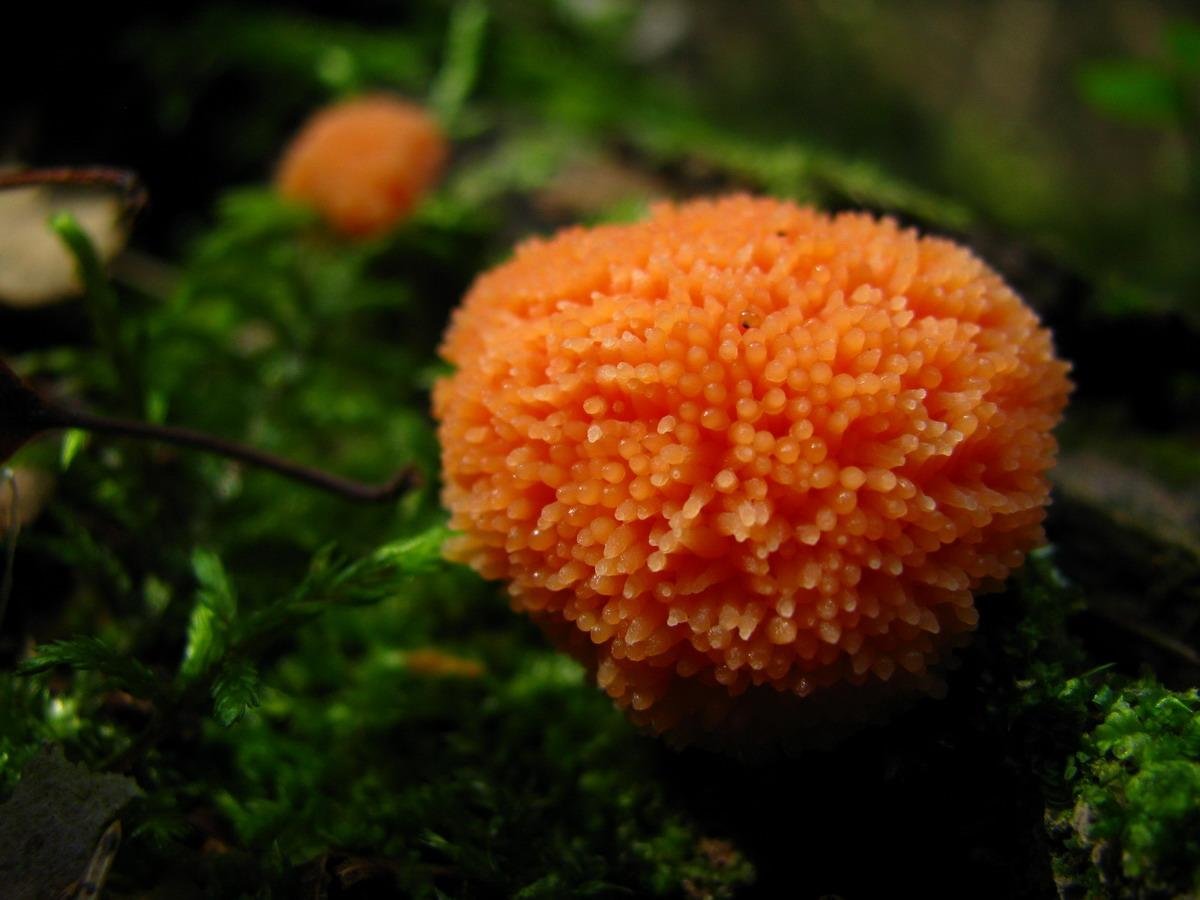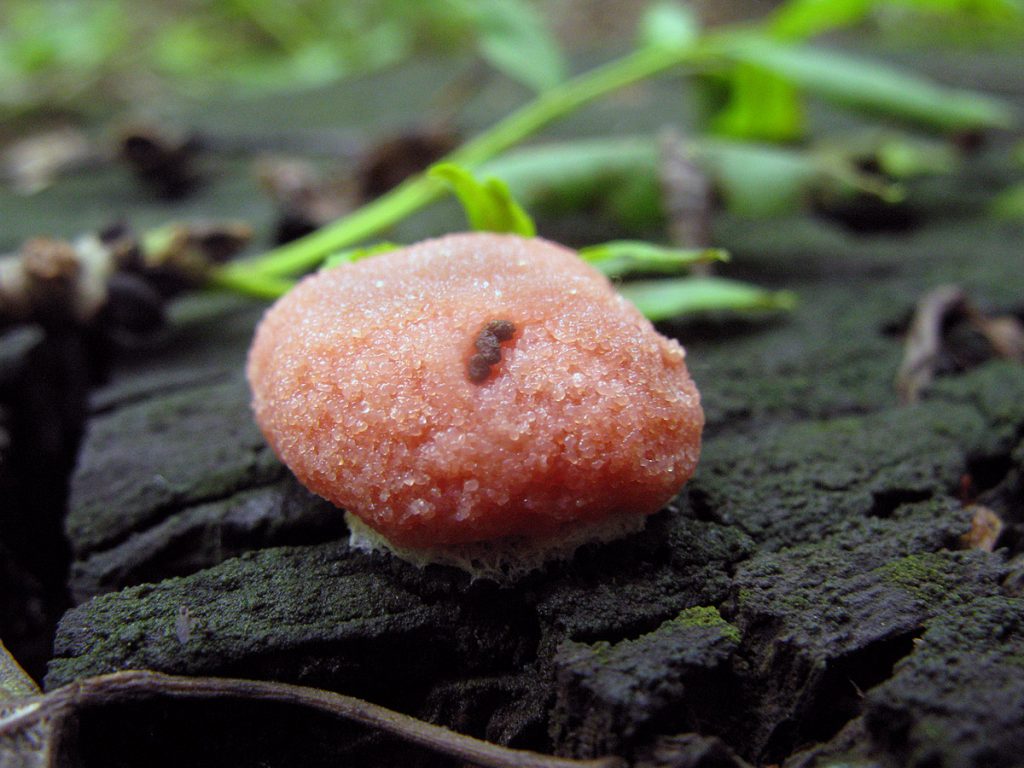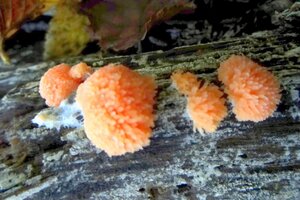Description
Sporophores - pseudoethalia, formed mainly by cylindrical sporotecs; cushion, hemispherical, prostrate. The hypothallus is spongy, white, yellowish, or brown, and may form a cylindrical stem. Individual sporotecs are cylindrical, less often spherical or labyrinth-like, located in the form of one or more layers, in cross-section, rounded or polygonal from mutual compression; the tops of the sporoteca are rounded, clavate, conical, or flat. Peridium membranous, elastic, shiny or dull, sometimes slightly iridescent; autopsy is irregular, mainly in the upper part. Pseudocolumella is absent or present, conical or cylindrical, sometimes fuses with the apex of the sporoteca; can form side branches. There is no pseudocapillium, less often it has the form of membranous strands between the perforated areas of the peridium. Spores in the mass are rusty-brown, less often ocher-brown, copper-brown; ornamented with a mesh, occasionally with warts or combs, often with a pale area. Plasmodium and juvenile sporocarps are various shades of pink, chestnut brown or black when ripe.
Rusty tubifer slime mold: description and photo
| Name: | Rusty tubifera |
| Latin name: | Tubifera ferruginosa |
| Type of: | Inedible |
| Specifications: | |
| Systematics: |
|
There are fruiting bodies that are something in between mushrooms and animals. Myxomycetes feed on bacteria and can move around. Rusty tubifera of the Reticulariev family belongs to such slime molds. She is a plasmodium and lives in places hidden from human eyes. Today, about 12 species of similar varieties are known.
Where rusty tubifera grows
The favorite habitat of these mixomycetes is stumps and driftwood, fallen trunks of rotten trees. They settle in cracks where dampness remains, where direct rays of the sun do not fall. Their growth time is from early summer to mid-autumn. They come across in the forests of the temperate zone of Russia and Europe. They are also found to the south: in tropical and equatorial forest zones. These representatives can often be seen in Australia, India, China.
What a rusty tubifer slime mold looks like
Myxomycetes are tubules (sporocarps) up to 7 mm high, they are located very closely. They grow together with a side wall, but do not have a common shell. They look like one fruiting body, while each sporocarp develops individually. It consists of a head, called the sporangia, and a leg. Such bodies are known as pseudoethalia.
Spores emerge from sporocarps and form new fruiting bodies. Thus, the slime mold can grow up to 20 cm. At the beginning of maturation, the plasmodium is colored pink, bright red. Gradually, the bodies lose their attractiveness and become dark gray, brown. Therefore, this type of slime mold is called rusty. In this state, they are almost impossible to notice.
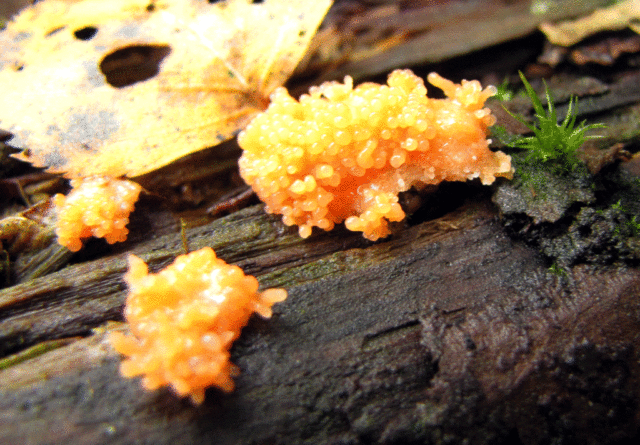
The bright color of the rusty tubifera is noticeable for everyone
The development cycle of rusty tubifera is complex:
- Spores appear and germinate.
- Cells similar to the structure of an amoeba develop.
- Plasmodia with multiple nuclei are formed.
- Formed sporophore - pseudoethalium.
Then the cycle starts over.
Is it possible to eat rusty tubifera
Pseudoethalium is inedible either early or late in maturation. This is not a mushroom, but a completely different fruiting body.
Conclusion
Rusty tubifera - cosmopolitan. It is found in different parts of the earth from northern to southern latitudes. It is not only in Antarctica.
Description and places of distribution of willow spit
Willow rods are a mystery mushroom. Can I eat it? Description and period of fruiting. Where does willow roach grow? There are various rumors around this representative of the mushroom kingdom regarding its edibility.Some argue that willow roast is a hallucinogenic mushroom, and it is undesirable to eat it, others that it can be consumed. Where does it grow, what does it look like and how can you decide whether it can be used in the preparation of various dishes?
Description
Willow wicker (Pluteus salicinus), also called willow, belongs to the Plutey family, the Plyutey genus. It also has other names: Agaricus salicinus, as well as Rhodosporus salicinus and Pluteus petasatus. By the way, behind the last name, by mistake, another species may be hidden - a noble rogue.
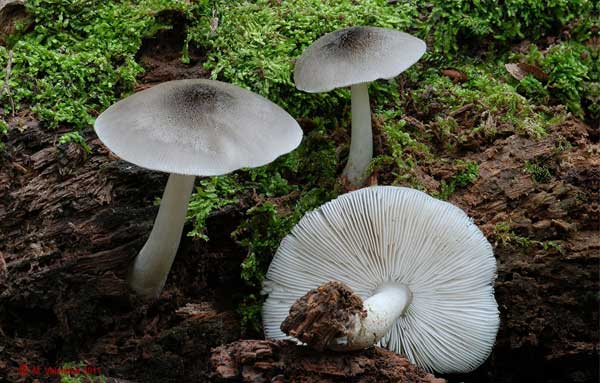
This rogue is a conditionally edible (according to some sources hallucinogenic) lamellar mushroom. Outwardly, it resembles a hybrid of russula and toadstool.
- the cap in young fruiting bodies is convex, conical-bell-shaped; in adult mushrooms, it is flat-convex or flat-spread. In the middle, you can often see a wide, low tubercle with thin scales. The average diameter is from 2 to 7 cm, but mushrooms up to 8-9 cm in size come across. The hat is thick-fleshed, thinning towards the edge. Gigrofanny, that is, under the influence of moisture, it is capable of swelling. The skin is shiny, fibrous in a circle, with wrinkles. The color varies from grayish-green, gray-bluish to brownish-gray, darker towards the center. Blue or brownish pink may sometimes be present;
- the leg is even, rarely curved, cylindrical, slightly thickened below, fibrous. Length from 3 to 6 cm and diameter from 0.3 to 1 cm. Some individuals have legs up to 12 cm high. Shiny, white or slightly bluish in young mushrooms and olive gray in mature ones. Also, older mushrooms may have gray-green or bluish spots on the surface of the stem. The same spots can appear with pressure;
- the pulp is watery, fragile, grayish or white. When pressed and cut slightly green. The flesh of the leg is loose. Has anise or rare aroma. Sourish taste;
- the plates are thin and frequent, loose, rather small, white, pinkish or cream-colored;
- spores ovoid or in the form of a wide ellipse, smooth, brownish-pink or pinkish.
Distribution and fruiting period
Willow or willow whip is known to the inhabitants of Asia, including in the Primorsky Territory, Transcaucasia, Western Siberia, Vietnam and other countries. Also found in North America, North Africa, Europe, with the exception of the Balkans. It also grows in Russia in the St. Petersburg region.
It is a saprotroph that lives on dead wood, fallen leaves. Basically, the plyutey chooses willow, alder, beech, oak, linden, poplar, rarely conifers for residence. Sometimes the mushroom can be found in a forest belt or a park at the roots of a tree. It settles in deciduous or mixed forests, where it is humid.
The fruiting period begins in June and lasts until October, but in warm climates, this mushroom can be found in spring. It grows alone, rarely - in groups, in rows. In general, willow roach is very rare.
Edibility

Also, the mycologist Solomon Wasser describes the willow whip as a rather poorly studied mushroom. In his opinion, it can be eaten, but depending on where he lives, the whip can be hallucinogenic, since substances that cause hallucinations have been found in its pulp. They were found in the analysis of fruit bodies collected in America and Europe. The composition of the dried willow spit contains psilocin from 0.011 to 0.05%, and psilocybin - 0.21-0.35%.
Similar types and differences from them
Even a novice mushroom picker can easily distinguish a willow spit from other spits. The main difference is the spots on the leg of a blue or green hue. However, this trait is highly dependent on the area where the fungus grows.
The hero of the article can be confused with small representatives of the species "reindeer whips" (in Latin - Pluteus cervinus), from which it will differ in the color of the pulp after the cut (in the deer, the cut does not change color). Also, a microscope will help to distinguish these two species from each other: the deer spit does not have the buckles on the mycelium, which the willow has.
Based on the foregoing, it is possible to eat willow sticks for food, but this must be done carefully and carefully.
Pay attention to where you collected it. Maybe not worth the risk and taste it
Rusty tubifera
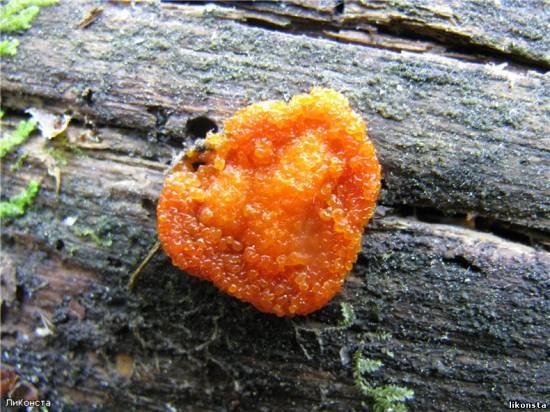
Rusty tubifera (Tubifera ferruginosa)
Plasmodium: lives in hard-to-reach damp places. Colorless or slightly pinkish. Tubifera belongs to the Reticulariaceae family - slime molds, mixomycetes. Myxomycetes are fungi-like organisms, something between fungi and animals. At the plasmodium stage, Tubifer moves and feeds on bacteria.
It is difficult to see Plasmodium, it lives in the crevices of felled trees. Fruit bodies of Tubifera of various shades of pinkish color. In the process of maturation, they become black with a rusty tint. The spores exit through the tubules and form the fruiting body.
Sporangia: Tubifera are afraid of direct sunlight, live on damp stumps and snags. They are located quite closely, but they form pseudoethalium from 1 to 20 cm in size. They do not merge into etaliae. Externally, pseudoethalium looks like an adjacent battery of tubes 3-7 mm high, arranged vertically. The spores pass through holes, which are specially opened in the upper part of the tubes. In youth, the mushroom-like organism of tubifera is distinguished by a bright crimson or red color, but with maturation the sporangia become less attractive - they turn gray, turn brown, acquiring a rusty color. Therefore, the name appeared - rusty Tubifera.
Spore powder: dark brown.
Distribution: Tubifera forms its pseudoetalia from June to October. Found on mosses, old roots and rotting tree trunks. Plasmodium usually hides in crevices, but some sources claim there is a way to lure them to the surface.
Similarity: In its bright red state, Tubifer cannot be confused with any other mushroom or slime mold. In another state, it is almost impossible to detect it.
Notes: It is difficult to say when Tubifera begins the process of transforming from a plasmodium into a fruiting body, similar to a mushroom, and why such a difference in size. But, nevertheless, it is a fact, small pseudoethalia of a few centimeters get along well with huge conglomerates. They have in common only a bright crimson color and an appetizing appearance. True, Tubifera ferruginosa is not exactly a mushroom, but it is very attractive at the beginning of its journey.
Views
The most famous polymorphic species T. ferruginosa, ubiquitous in the forests of the Northern Hemisphere. T. applanata described from the temperate latitudes of Eurasia. Views T. dimorphotheca and T. bombarda found in the equatorial zone and the southern hemisphere.
Currently, the genus includes 12 species, including:
- Tubifera applanata
- (Tubifera bombarda) - modern name Alwisia bombarda
- Tubifera casparyii
- Tubifera corymbosa
- Tubifera dictyoderma
- Tubifera dimorphotheca
- Tubifera dudkae
- Tubifera ferruginosa
- Tubifera magna
- Tubifera microsperma
- Tubifera montana
- Tubifera papillata
- Tubifera pseudomicrosperma

